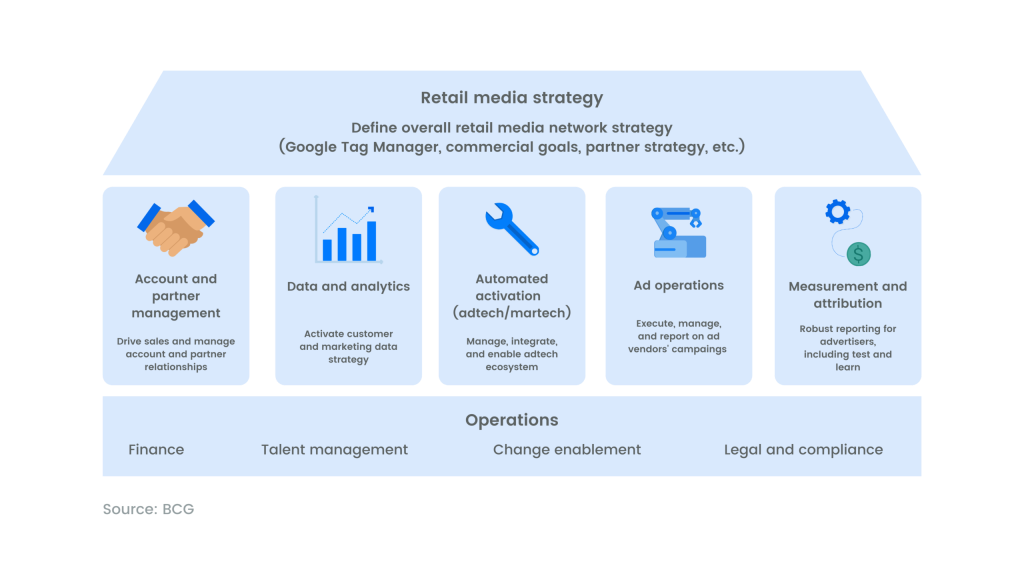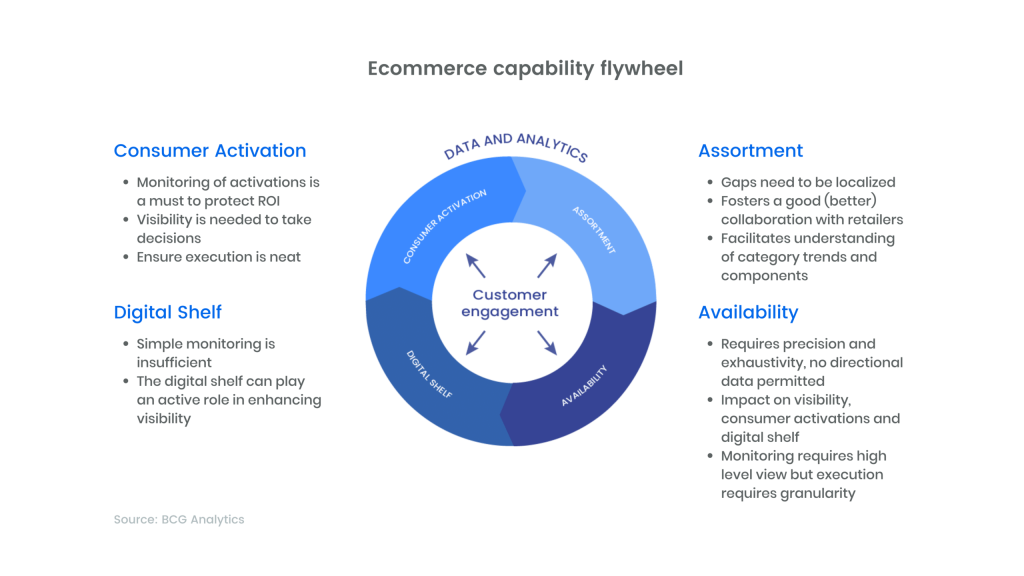Establish a retail media strategy before executing
Brands need to understand the evolving offerings and strategies of individual retailers as they build new tools and environments to reach consumers. A good relationship with retailers is essential here as it’s important to know what the objectives of a retailer are for different activations. Manufacturers can thus develop retailer-specific approaches, allowing them to make the right media buy for each outlet. As search ranking criteria varies between grocery chains as well as the activation offering, they need to be taken into account when determining an online media strategy.
With regards to considering existing campaigns, knowing what competitors are promoting across categories should guide a media spend for subcategories, segments, groups and keywords and will strongly inform promotions.
Online and offline eretail media strategy
Navigating the merging of offline and online, also known as omnichannel, is the interconnecting of brick and mortar (where most still buy) and the digital world (where many now browse). Omnichannel has been a reality for some time and is the only way forward to keep up with the significant demands consumers now make.
Strategically, the digital and physical must now be seamlessly linked, as digital experiences happen everywhere–even in-store. Online is no longer limited to a grocer’s website as consumers interact with platforms on their mobiles, and CPGs have a growing presence on social media.
“Ecommerce is big, the most valuable customers for brands and retailers typically browse, buy and expect service for both online and offline.”
Source: Bain
The omnichannel is evolving in new ways as online promotions are offered in-store or at click and collect points through geofencing or QR codes and dedicated areas of stores are used for experiential marketing.
Again, the physical store is still where the majority of sales occur and their power as an advertising platform is undeniable.
Strategic partners for retail media
A retail media strategy needs to enlist not just in-house organization and expertise, but outside partners. These are the aspects of a strategy that usually need to be addressed:

Choosing the right partners helps brands to address the increasingly complex omnichannel reality. The ultimate goal is to create a unified customer experience across all channels, thus boosting sales.
Data analytics play an important part of this partner mix and the need for comprehensive data that is sourced from each individual online store and distribution point as opposed to a sample of stores is paramount.
Data analytics and online media
The BCG ecommerce capability flywheel illustrates the role data analytics play in developing a online media strategy for activations. Every part of the digital shelf is interconnected, so the reliability of the data a manufacturer uses is critical. If one part of the information in the flywheel is faulty it will have repercussions throughout the process. Reliable tech partners make a world of difference for a brand. Learn more about the relationship between tech and eretail media here.





